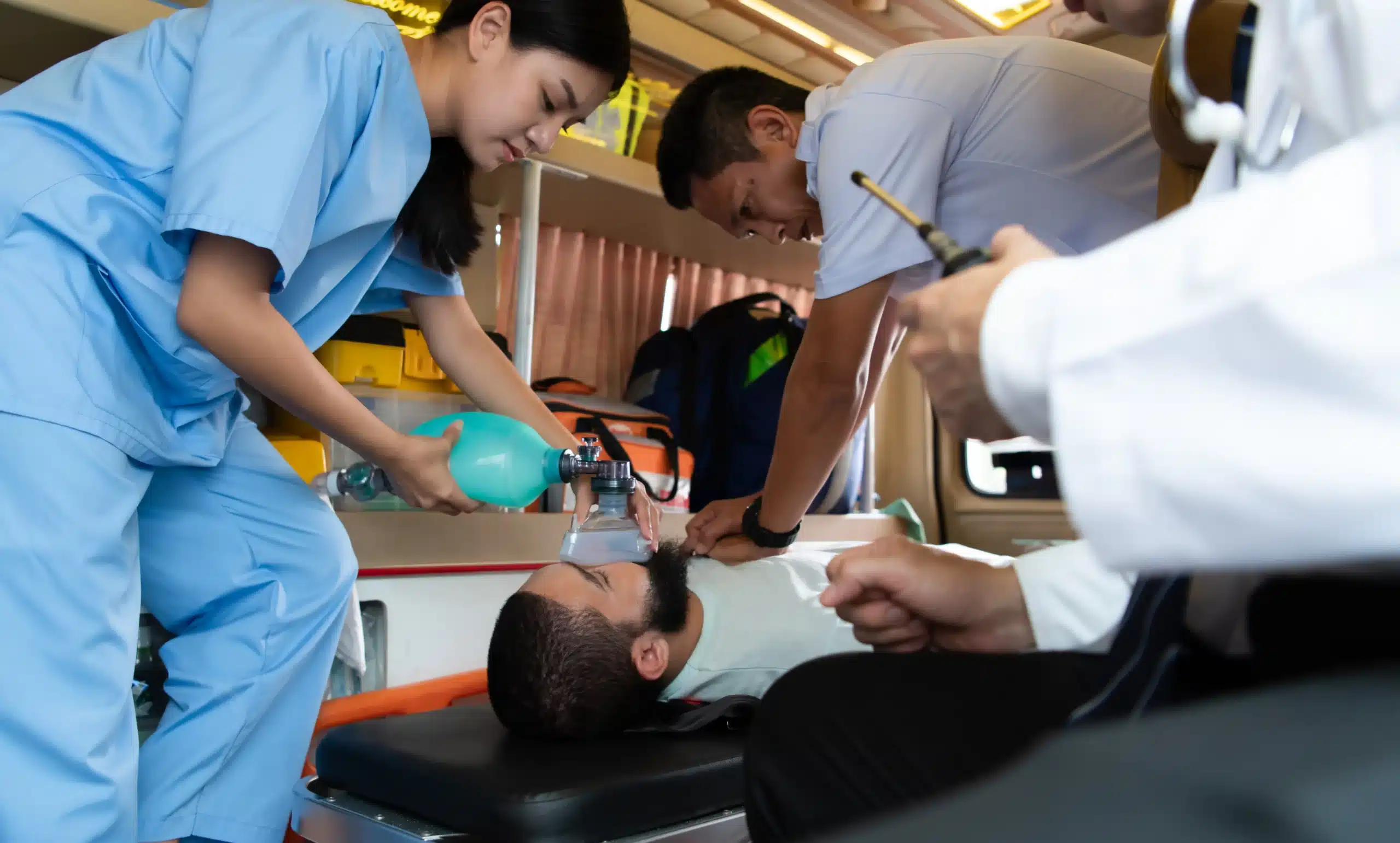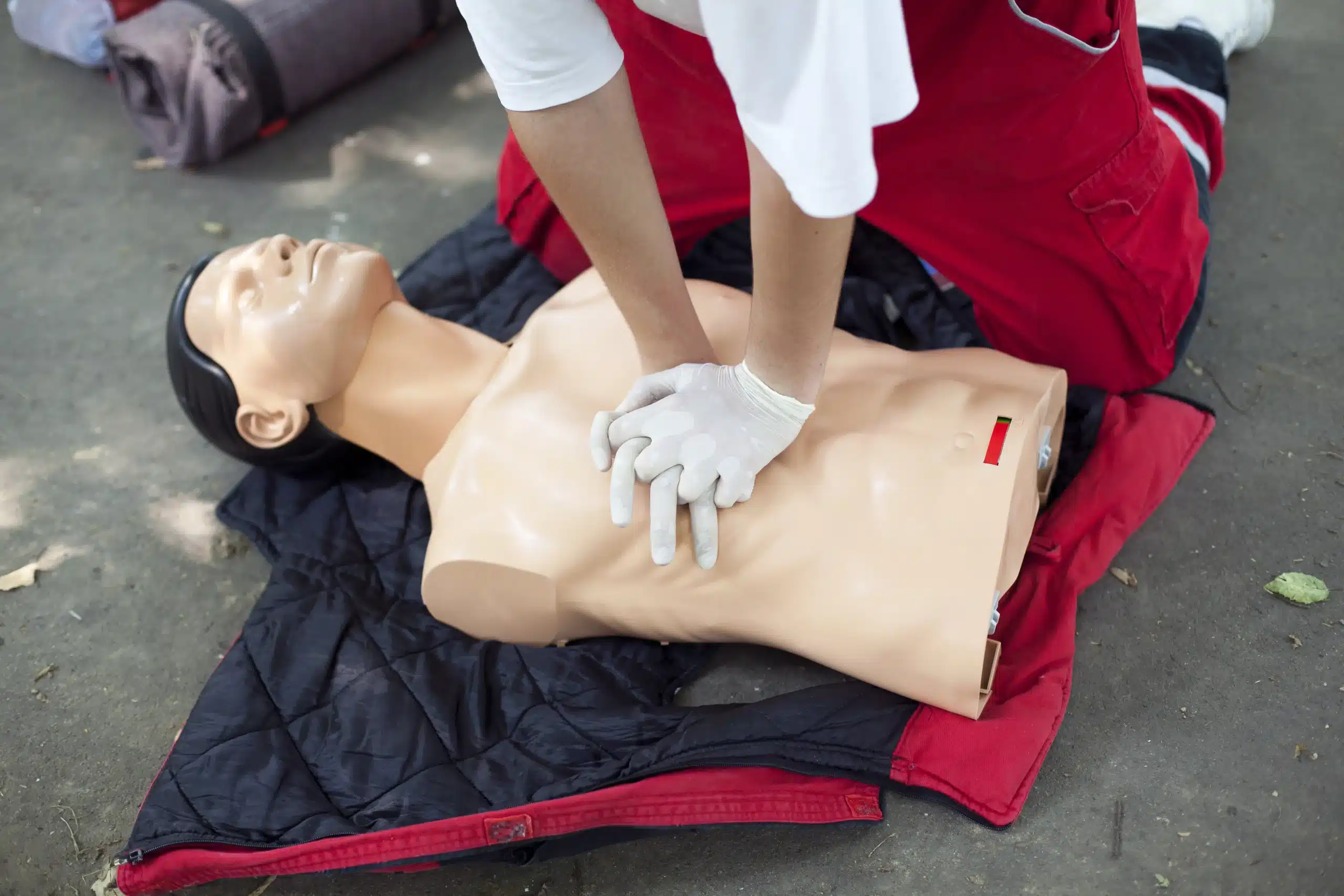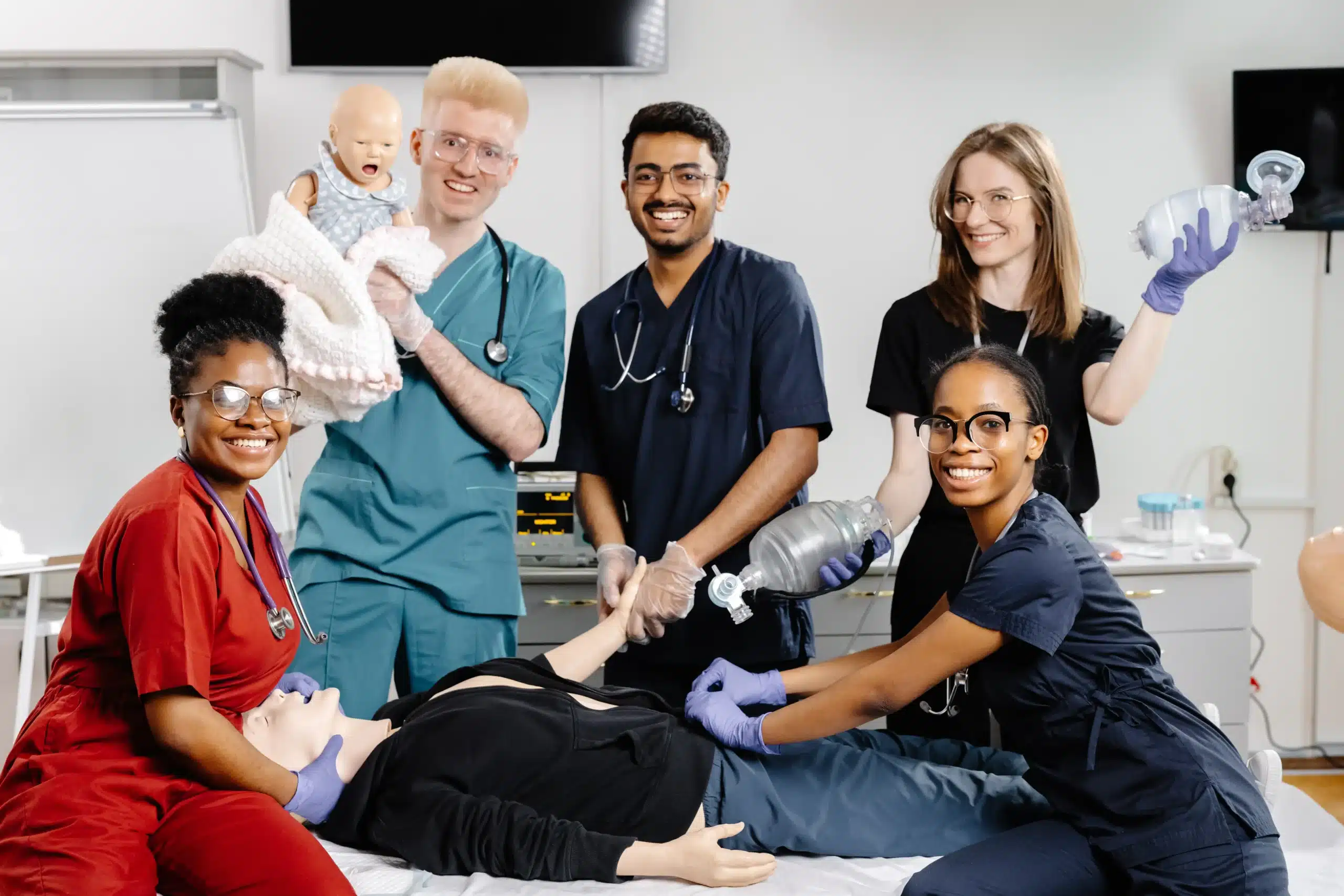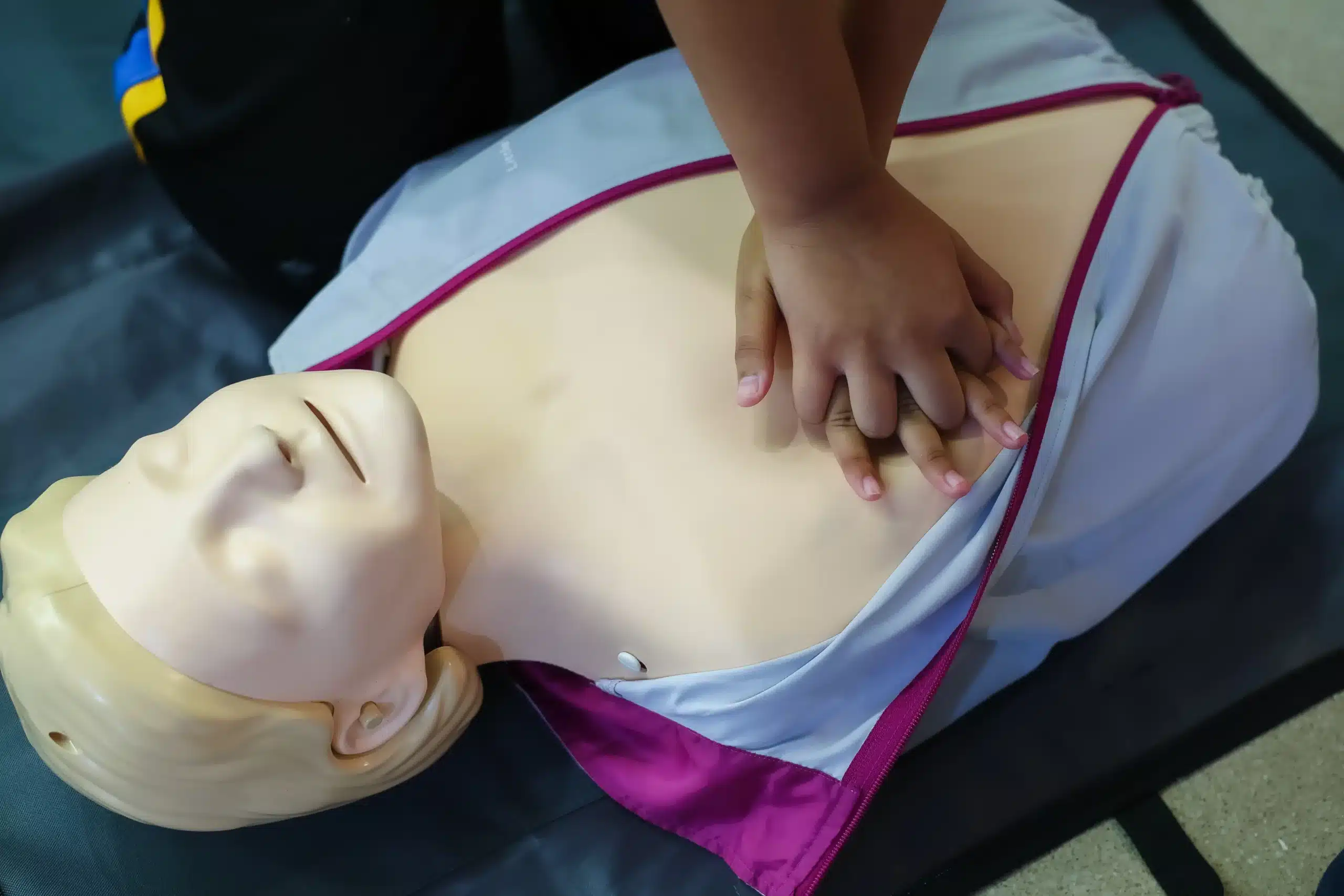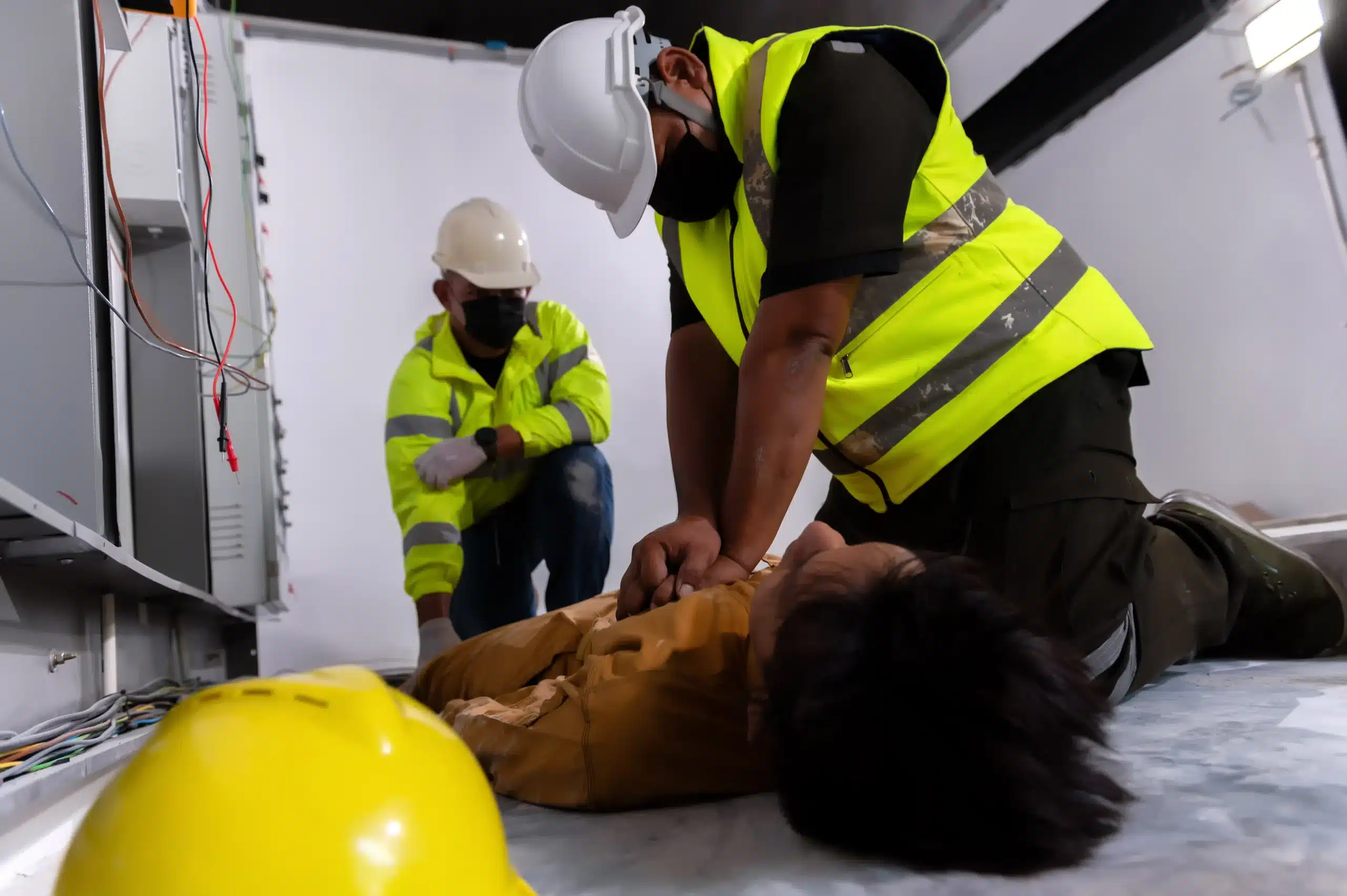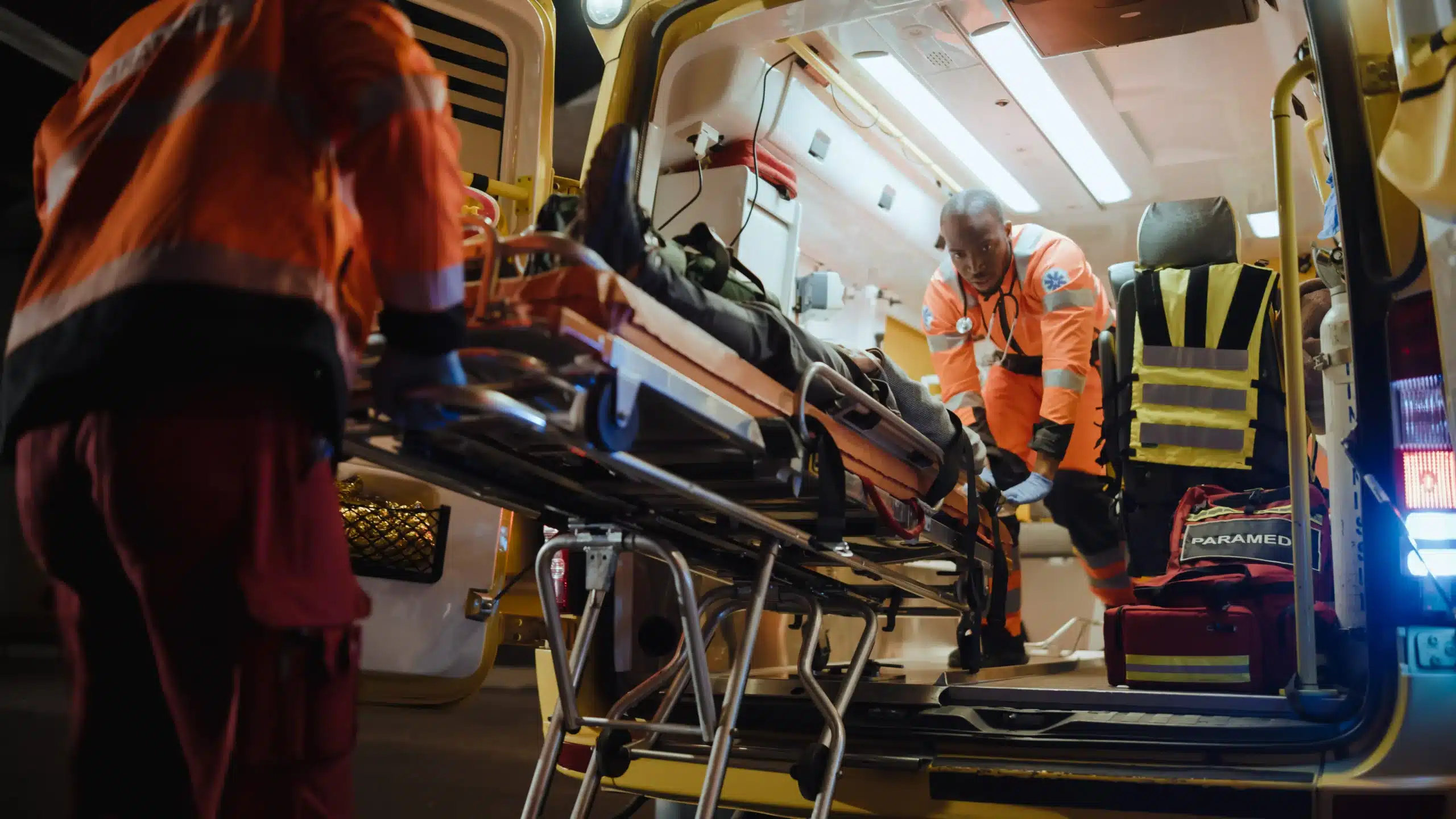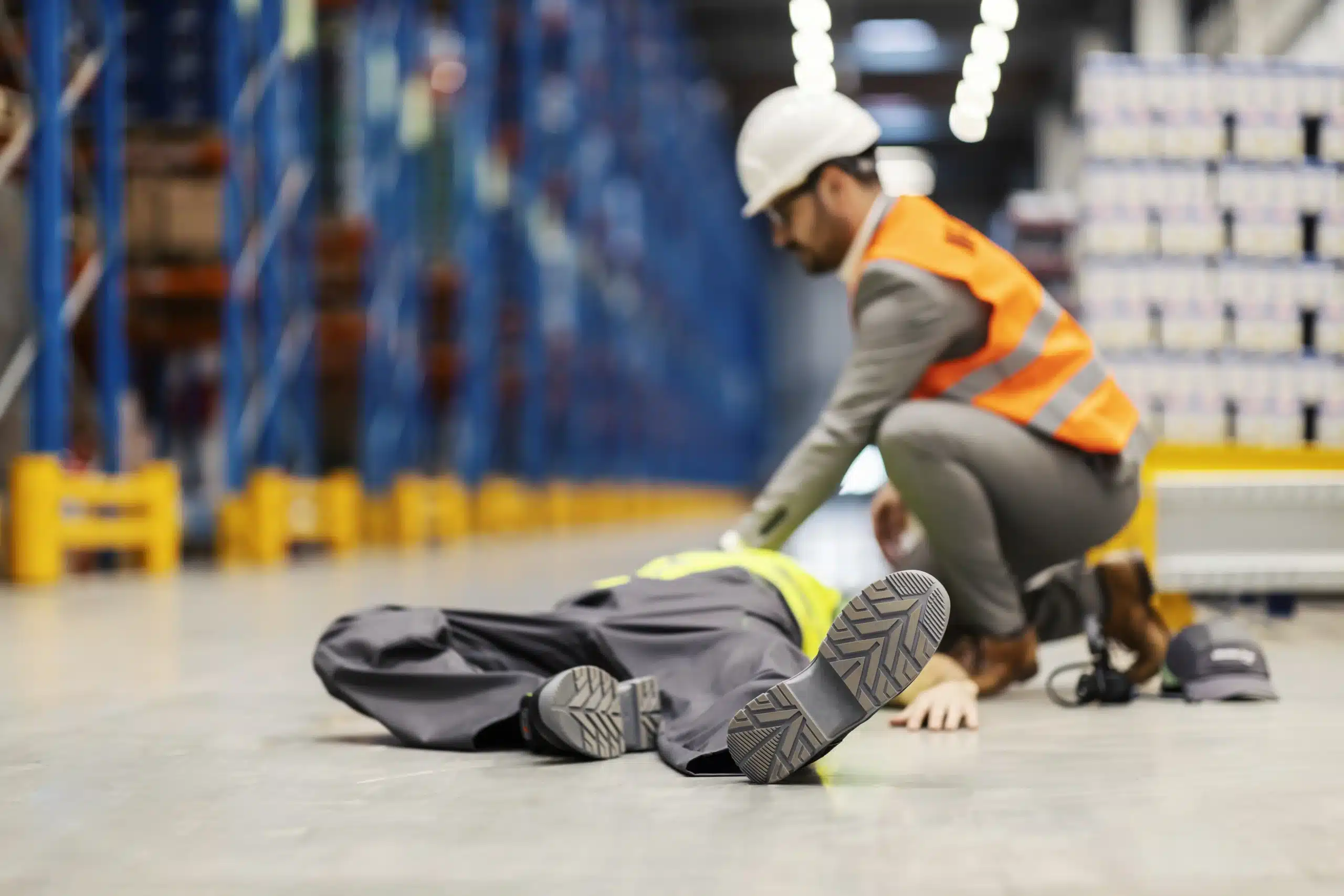Seconds count in a medical emergency, especially when a child is involved. Pediatric CPR and first-aid training equips you with the skills to respond swiftly and confidently, potentially making all the difference in a critical situation. This comprehensive guide explores the importance of pediatric CPR and first-aid in Visalia, covering everything from basic techniques to finding certified training providers in your area. We’ll discuss the unique needs of children in emergencies, debunk common CPR myths, and provide practical tips for staying prepared. Whether you’re a parent, caregiver, or simply someone who wants to be prepared, this article will empower you to act quickly and effectively when it matters most.
Key Takeaways
- Pediatric emergencies require a specialized approach: Equipping yourself with pediatric CPR and first-aid skills ensures you can respond effectively to the unique needs of infants and children. Seek out training that focuses on age-appropriate techniques and responses.
- Find the right training for your role: Whether you’re a parent, caregiver, or healthcare professional, choose a course that aligns with your specific responsibilities. Look for certified instructors with experience in pediatric care and consider factors like cost, accessibility, and course content.
- Practice and ongoing learning are key: Hands-on training and simulated scenarios build confidence and competence. Regularly reviewing materials and seeking refresher courses ensures your skills remain sharp and up-to-date, allowing you to provide the best possible care in an emergency.
What is Pediatric CPR and First-Aid?
Pediatric first-aid training equips you with the skills to respond effectively to emergencies involving children. It covers a range of situations, from minor injuries like cuts and scrapes to more serious events like choking, allergic reactions, and breathing difficulties. This specialized training focuses on the specific needs of infants and children, recognizing their distinct physiological differences from adults. Pediatric first-aid courses often include modules on injury prevention and creating safe environments.
How Does it Differ from Adult CPR?
While the core principles of CPR remain consistent, there are crucial differences between adult and pediatric CPR. Chest compressions for children are often performed with one or two hands (depending on the child’s age and size) rather than two hands as in adult CPR. Rescue breaths are also adapted to a child’s smaller lung capacity. Specialized courses like the PedFACTs program focus on giving caregivers and teachers the confidence and skills to handle pediatric emergencies.
Debunking Common Misconceptions
Many hesitate to learn CPR due to common misconceptions. Some believe CPR is solely for medical professionals, while others worry about causing harm. The truth is, anyone with proper training can safely perform CPR, and it can significantly increase the chances of survival in an emergency. Don’t let these myths prevent you from learning this life-saving skill. At Safety Training Seminars, we empower individuals in Visalia, Tulare, and Delano with the knowledge and skills to act confidently in emergencies. Contact us to learn more about our courses.
Learn Essential Skills and Techniques
Pediatric first-aid training teaches essential skills like recognizing the signs of an emergency, administering CPR, and providing basic wound care. You’ll learn how to assess a child’s condition, perform age-appropriate rescue breaths, and control bleeding. These techniques can make a critical difference in stabilizing a child until professional medical help arrives. Enroll in a BLS course in Visalia today and gain the confidence to act quickly and effectively in emergencies. Our low price guarantee ensures you receive high-quality training at the most affordable rates in Tulare County.
Why is Pediatric CPR and First-Aid Training Important?
Knowing how to respond to a medical emergency involving a child is a powerful skill. Pediatric CPR and first-aid training gives you the confidence and competence to act quickly when seconds count. It empowers you to provide immediate care, potentially minimizing harm and improving outcomes. Whether you’re a parent, caregiver, or simply someone who wants to be prepared, understanding the importance of this specialized training can make all the difference.
Understand the Unique Needs of Children in Emergencies
Children aren’t just small adults; their bodies react differently to illness and injury. Their airways are smaller, their breathing rates faster, and their immune systems still developing. Pediatric first-aid training equips you with the knowledge to recognize and address these distinct physiological differences. This specialized training covers age-appropriate responses, ensuring you can provide effective care tailored to a child’s specific needs. Learning these crucial distinctions can significantly impact a child’s well-being during a medical crisis.
Know the Legal Requirements for Caregivers
In California, certain childcare providers are legally required to have CPR and first-aid certifications that meet specific standards, including Title 22 and EMSA requirements. This training ensures caregivers possess the skills to handle emergencies effectively and maintain a safe environment for the children in their care. Understanding these legal obligations is essential for anyone working with children professionally. Safety Training Seminars offers courses that satisfy these requirements, providing you with the necessary credentials to comply with California law.
Prepare for Common Scenarios
Children are naturally curious and active, which, while wonderful, can sometimes lead to unexpected accidents. Pediatric first-aid training prepares you for common childhood emergencies, from minor cuts and scrapes to more serious situations like choking, allergic reactions, and burns. Knowing how to respond confidently in these scenarios can significantly impact a child’s safety and health. This training provides practical skills and techniques to address various injuries and illnesses, giving you the tools to act quickly and effectively in a crisis. Being prepared can bring peace of mind and potentially save a life.
Top Pediatric CPR and First-Aid Training Providers in Visalia
Finding the right training program is key to feeling confident in your skills. Here are a few reputable providers offering pediatric CPR and first-aid training in Visalia:
Safety Training Seminars
Safety Training Seminars offers a range of courses, including pediatric CPR and first aid, designed for parents, caregivers, and professionals who work with children. Their certified instructors equip participants with essential, life-saving skills. They offer flexible scheduling and can teach classes at your location, making it convenient for groups. Explore their course calendar for BLS certification in Visalia.
Bentley’s Heartsaver
Led by nurse Deniece Bentley, Bentley’s Heartsaver specializes in CPR and first-aid training with an emphasis on pediatric care. With over ten years of teaching experience, Deniece provides hands-on, interactive courses in a supportive learning environment. This makes Bentley’s Heartsaver a great choice for parents and childcare providers hoping to develop their skills.
Southern’s CPR & First Aid Training
Southern’s CPR & First Aid Training provides comprehensive programs in pediatric CPR and first aid for individuals and organizations. Their experienced instructors use real-life scenarios to build participants’ confidence in responding to emergencies involving children. Learn more about their training programs in Visalia.
Available Courses and What They Cover
Knowing what to do in a medical emergency involving a child can be life-saving. Thankfully, several courses are available to equip you with the skills and confidence to act quickly and effectively. Here in Visalia, we offer comprehensive training options covering a range of pediatric emergencies.
Basic Life Support (BLS) for Children
BLS for children focuses on providing immediate care to a child experiencing cardiac arrest or respiratory distress. This course covers essential techniques like CPR and rescue breathing, specifically adapted for infants and children. You’ll learn how to assess a child’s condition, perform chest compressions, open the airway, and deliver breaths. BLS certification is often a requirement for healthcare providers and those working with children. Safety Training Seminars offers BLS courses in Visalia, following American Heart Association guidelines.
First Aid for Common Pediatric Emergencies
This course addresses common injuries and illnesses children face, from minor cuts and scrapes to more serious situations like burns, choking, and allergic reactions. You’ll learn how to recognize the signs and symptoms of various pediatric emergencies and provide appropriate first aid. Understanding how to handle these situations can significantly impact a child’s recovery and well-being. Preparing yourself with pediatric first aid knowledge can make all the difference.
AED Usage for Children
Automated External Defibrillators (AEDs) can be life-saving in cases of sudden cardiac arrest. This training covers the safe and effective use of AEDs on children, including how to recognize the need for an AED, proper pad placement, and operation of the device. Certification in Pediatric first aid, CPR, and AED usage meets the requirements for California childcare workers.
Emergency Action Plans
Developing an emergency action plan is crucial for any setting where children are present, whether it’s a school, daycare, or even your own home. This training helps you create a comprehensive plan that addresses potential emergencies, outlines roles and responsibilities, and establishes communication procedures. A well-defined plan ensures a coordinated and effective response in a crisis, minimizing confusion and maximizing the chances of a positive outcome.
Cost and Accessibility of Training
Knowing the price and different learning options can help you choose the right pediatric CPR and first-aid training. Let’s break down the costs, explore discounts, and look at online versus in-person training.
Typical Price Range
CPR and first-aid training, bundled together, usually costs somewhere between $40 and $60 per person. Of course, prices change depending on who’s offering the course and exactly what’s included. You can find combined CPR and first-aid training for around $45, making these essential, life-saving skills accessible to almost everyone. Safety Training Seminars offers a low price guarantee for its courses.
Find Group Discounts and Promotions
If you’re training with a group, look for group discounts. Many providers offer lower prices for groups, which makes it easier on the budget if you’re signing up with friends, family, or coworkers. Keep an eye out for promotions too—sometimes you can find deals like $25 off a course, making training even more affordable.
Online vs. In-Person Options
Deciding between online and in-person training is a personal choice. Online courses offer flexibility and convenience, letting you learn at your own speed. They often cover the same material as in-person classes, which is great if you have a busy schedule. However, in-person classes give you that crucial hands-on practice. Practicing techniques directly on a CPR training mannequin is invaluable for real-life emergencies. Consider what learning style works best for you and choose the format that will give you the confidence to act quickly and effectively. You can find BLS courses through Safety Training Seminars in Visalia.
Instructor Qualifications and Expertise
Knowing your instructor’s qualifications is key when choosing a pediatric CPR and first-aid course. It ensures you’re learning the most current, evidence-based practices. Here’s what to look for in a qualified instructor:
Required Certifications
Instructors should hold certifications from nationally recognized organizations like the American Heart Association (AHA). These certifications demonstrate that instructors have met rigorous standards and possess the necessary knowledge and skills to teach these life-saving techniques. For example, certifications in Basic Life Support (BLS) for healthcare providers demonstrate an instructor’s proficiency in CPR for all ages. Look for providers who highlight their instructors’ qualifications and the certifying bodies they align with. Always verify an instructor’s certifications before enrolling in a course. This due diligence ensures you’re receiving training from a qualified professional.
Experience in Pediatric Care
Beyond general CPR certification, look for instructors with specific experience in pediatric care. Children have unique physiological differences from adults, requiring specialized approaches to CPR and first aid. Experienced instructors understand these nuances and can tailor their teaching to address the specific needs of infants and children. This specialized training often includes courses like Pediatric First Aid, CPR, and AED, equipping instructors with the skills to handle pediatric emergencies effectively. Ask potential training providers about their instructors’ backgrounds and experience working with children to ensure you receive the highest quality training. This specialized knowledge can make all the difference in a real-life emergency. Look for providers who emphasize their instructors’ pediatric experience and any specialized training they’ve received.
Choose the Right Pediatric CPR and First-Aid Course
Picking the right pediatric CPR and first-aid course is crucial. The best course for you will depend on your specific needs and responsibilities. Let’s break down the options for different groups:
For Healthcare Providers
Healthcare providers, such as doctors, nurses, and EMTs, need comprehensive training that meets specific regulatory requirements. Look for courses that follow American Heart Association (AHA) guidelines, covering CPR, BLS, ACLS, and PALS. Safety Training Seminars offers these AHA courses in Visalia. We can even bring the training to your facility, making it easy for your whole team to get certified. Check our website for BLS course schedules in Visalia.
For Parents and Caregivers
As a parent or caregiver, knowing pediatric first aid can make all the difference in an emergency. A child’s safety depends on your ability to react quickly and effectively. From everyday bumps and bruises to more serious situations like choking or allergic reactions, having these skills will provide peace of mind. A pediatric first-aid course tailored to parents and caregivers will equip you with the knowledge and confidence to handle a range of situations.
For Educators and Coaches
Teachers, coaches, and other professionals working with children also benefit from specialized pediatric CPR and first-aid training. These courses often cover common childhood injuries and illnesses, emergency care procedures, and creating emergency action plans. Being prepared creates a safer environment for the children in your care. Look for courses like the PedFACTs program from the Emergency Care Safety Institute, designed specifically for caregivers and teachers.
Certification Process and Validity
Get Certified
Earning your pediatric CPR and first-aid certification involves completing an accredited course that meets American Heart Association (AHA) requirements. These courses cover essential skills and techniques, combining classroom instruction with hands-on practice. You’ll receive an official AHA certification card, valid for two years, upon successful completion. This certification demonstrates your competence in responding to pediatric emergencies.
Recertification Requirements
Maintaining your pediatric CPR and first-aid skills is crucial. Your certification is valid for two years, after which you’ll need to recertify. This ensures your skills remain sharp and up-to-date with current guidelines. Recertification involves a similar process to initial certification, covering core concepts and practical application. Contact Safety Training Seminars for more information on upcoming recertification courses in Visalia.
Build Confidence Through Practice
Knowing what to do in a medical emergency is critical. But book knowledge isn’t enough. You need the confidence to act quickly and decisively when every second counts. That’s where hands-on practice and simulated scenarios become so valuable. These training techniques bridge the gap between knowing and doing, empowering you to respond effectively in real-life situations.
Hands-On Training Techniques
Hands-on training is essential for deeply understanding pediatric CPR and first aid. In a hands-on class, you’ll work with a CPR training mannequin to practice chest compressions and rescue breaths. You’ll learn the correct hand placement, depth of compressions, and the right amount of pressure to apply for a child’s more delicate body. This practical experience builds the muscle memory you need to respond efficiently in a real emergency. It’s one thing to read about CPR; it’s another to feel the correct rhythm and pressure. This tactile learning is invaluable for building confidence and competence. At Safety Training Seminars, our instructors guide you through each step, providing personalized feedback and making sure you master these essential skills. Learn more about our BLS certification courses.
Simulated Emergency Scenarios
Simulated emergency scenarios take your training to the next level. These exercises place you in realistic situations, mirroring the challenges you might face during an actual pediatric emergency. Imagine a scenario where a child is choking or unresponsive. In a safe learning environment, you’ll work through the steps, applying your new skills and making critical decisions under the guidance of experienced instructors. Practicing in a controlled environment lets you refine your responses, identify areas for improvement, and build the confidence to handle real-life emergencies. This training goes beyond the mechanics of CPR and first aid, teaching you how to assess the situation, prioritize actions, and remain calm under pressure. Contact us to discuss your training needs and explore our course options.
Stay Prepared with Ongoing Learning and Resources
Knowing pediatric first aid and CPR equips you to handle emergencies involving children with confidence. But like any skill, it needs regular practice. After your initial training, staying up-to-date and keeping your skills sharp is essential. Think of it as ongoing maintenance for your lifesaving abilities.
One way to stay prepared is by regularly reviewing the material. Quick refreshers on CPR techniques or how to address common childhood injuries, like burns or choking, can make all the difference in an emergency. Resources like the Red Cross offer helpful refreshers for parents. You can also find valuable information on sites like CPR Certification Now, which provides guides on pediatric first aid.
Consider joining online communities focused on first aid and CPR. These platforms allow you to connect with other parents and caregivers, share experiences, and ask questions. They can also keep you informed about new guidelines. Many training providers, including SureFire CPR, offer refresher courses. These shorter sessions reinforce what you’ve already learned and introduce any updated procedures. Being prepared is an ongoing commitment to keeping your skills and knowledge current, ensuring you’re always ready to provide the best possible care.
Related Articles
- CPR Training in Visalia: Your Complete Guide – Visalia CPR Classes
- Debunking Common CPR Myths
- Why Workplace CPR and First-Aid Training Matters
- Why CPR Is Crucial in Healthcare
- CPR Classes in Visalia: Find the Right One For You – Visalia CPR Classes
Frequently Asked Questions
What are the key differences between infant, child, and adult CPR?
While the basic principles of CPR are similar across age groups, there are important differences. Infant CPR uses two fingers for compressions, child CPR typically uses one or two hands (depending on the child’s size), and adult CPR uses two hands. The depth of compressions and rescue breath techniques also vary based on age. Specific training in each type of CPR is essential for providing effective care.
How often do I need to renew my pediatric CPR and first-aid certification?
Certifications are typically valid for two years. Renewing your certification ensures you stay up-to-date with the latest guidelines and best practices, maintaining your confidence and competence in responding to emergencies.
What if I’m nervous about performing CPR in a real emergency?
It’s completely normal to feel apprehensive. High-quality training programs incorporate hands-on practice and simulated scenarios to build your confidence and prepare you for real-life situations. Practicing in a safe learning environment helps develop muscle memory and decision-making skills, reducing anxiety and empowering you to act effectively under pressure.
Are online pediatric CPR and first-aid courses as effective as in-person classes?
Online courses offer flexibility and convenience, making them a great option for busy schedules. However, in-person training provides invaluable hands-on practice with mannequins and the opportunity for personalized feedback from instructors. Consider your learning style and preferences when choosing the format that best suits your needs.
Besides CPR and basic first aid, what other skills are beneficial for parents and caregivers?
Learning how to create a comprehensive emergency action plan for your home or childcare setting is highly beneficial. This plan should include procedures for various emergencies, contact information, and designated roles and responsibilities. Being prepared with a well-defined plan can significantly improve outcomes in a crisis.
